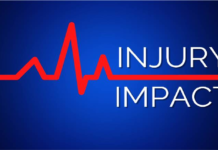A number of recent articles stated that the government’s new reverse mortgage changes (Mortgagee Letter 2017-12) will make the program less attractive to borrowers. However, this might have been an initial overreaction. While the program is being adjusted, the changes to the program could improve the market, lower costs for some borrowers, and secure the long-term health of the program.
The changes are mostly in response to a 2016 actuarial report showing the FHA costs of running the HECM program. Starting October 2, some major changes are coming to the HECM reverse mortgage industry as the government aims to strengthen the long run projections of the program. According to HUD Secretary Ben Carson, “[w]e have a responsibility to make changes that balance our mission with our responsibility to protect taxpayers[.] Furthermore, Carson noted that the changes are “needed and prudent steps to put the HECM program on a more sustainable footing so that it can remain a resource for senior borrowers[.]” This point cannot be overstated – the HECM program is a valuable resource for seniors, as it can be an effective way to tap into home equity to support retirement. For more information on how to properly utilize home equity and reverse mortgages, check out resources from experts like the Funding Longevity Taskforce at The American College, or Dr. Tom Davison’s Tools for Retirement Planning.
Let’s take a quick look at how the program will be changing. There are three essential differences which will take effect starting October 2, 2017. First, upfront HECM mortgage insurance premiums will be increased for certain borrowers, but lowered for others, as compared to the current system. Second, the ongoing mortgage insurance premiums will be lowered, bringing down the total compounding rate cost for most borrowers. This could put rates more in line with the rates of traditional mortgages and the rates of home equity lines of credit. Thirdly, principal limit factors will be changed, which impacts the amount of home equity that will be available for homeowners to tap into at various ages under the HECM program. Let’s examine the specifics of each of these three major changes, and how each one will affect borrowers, and the potential impact each one could have on the marketplace.
- Changes in Upfront Mortgage Insurance Premiums: In the past, a borrower would be charged an upfront Mortgage Insurance Premium (MIP) amount based on the amount being withdrawn from their home equity. For instance, if a borrower took 60 percent or less of the loan proceeds upfront, the upfront MIP rate was 0.5 percent of the “maximum claim amount” (typically the appraised home value at time of loan). However, if a borrower took more than 60 percent of the loan proceeds upfront, the rate would have been 2.5 percent As such, the program was set up to essentially dissuade people from taking large lump sum amounts all at once. However, that incentive will now be gone, as all borrowers will now be charged a flat 2 percent, regardless of the amount borrowed. For those not taking a large percentage of their loan proceeds upfront, the initial MIP amount will be higher, increasing the upfront costs for these consumers. However, for those who would have taken more than 60 percent upfront, their upfront costs will actually go down as compared with the old program.
Market Impact of Changes in Upfront Mortgage Insurance Premiums: Since one disincentive to take a large lump sum amount disappears with the new MIP change, the market could see a slight increase in the amounts of initial withdrawals. However, borrower behavior is not expected to change dramatically as a result, because the industry and professionals alike have been trending away from large lump sum distributions for years now. However, one reverse mortgage option has been to establish a HECM line of credit just in case it might be needed in the future. Some companies have been offering this arrangement for a low or almost no upfront cost. Now that there will be higher upfront costs for setting up a standby HECM line of credit, this will likely change.
- Lower Ongoing Borrower Costs: Coupled with the increased upfront change to the MIP rate, ongoing MIP rates will also change. Historically, the annual MIP was 1.25 percent of the outstanding loan balance. This is now being reduced to 0.5 percent of the outstanding loan balance, which could translate into thousands of dollars of savings each year for a borrower. For instance, a borrower with a $300,000 loan balance would save roughly $1,000 a year in MIP payments under the new system. Lowering the ongoing rate really helps those borrowers who have outstanding loan balances, which in some cases could offset the larger upfront MIP charges over the life of the loan. However, for borrowers using a standby line of credit, the lower ongoing costs will not be helpful until they actually take a withdrawal from the HECM.


















